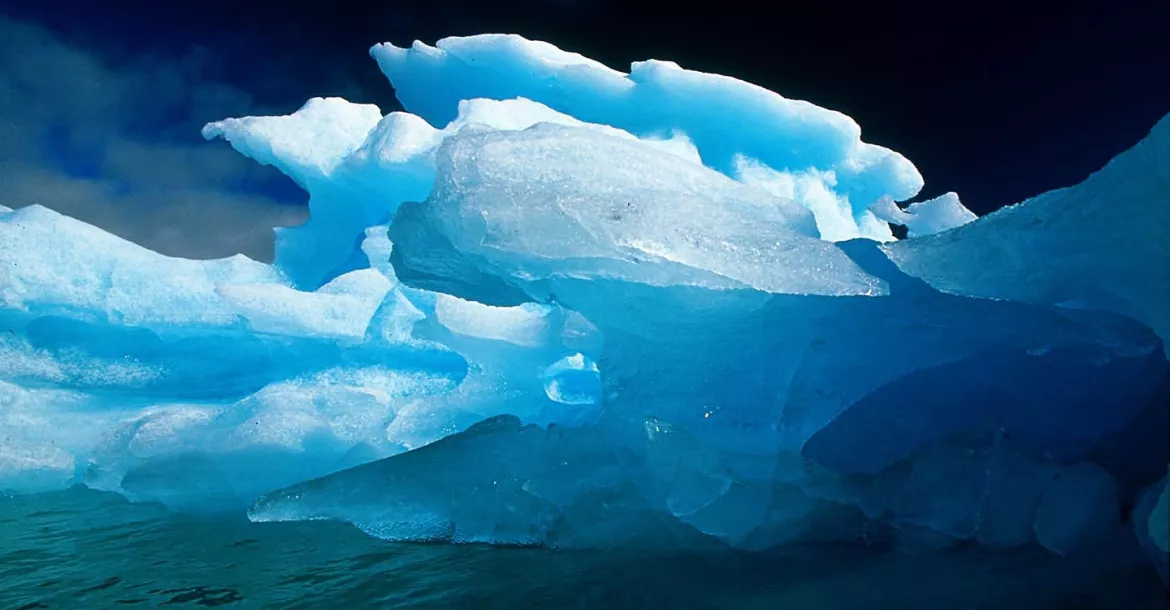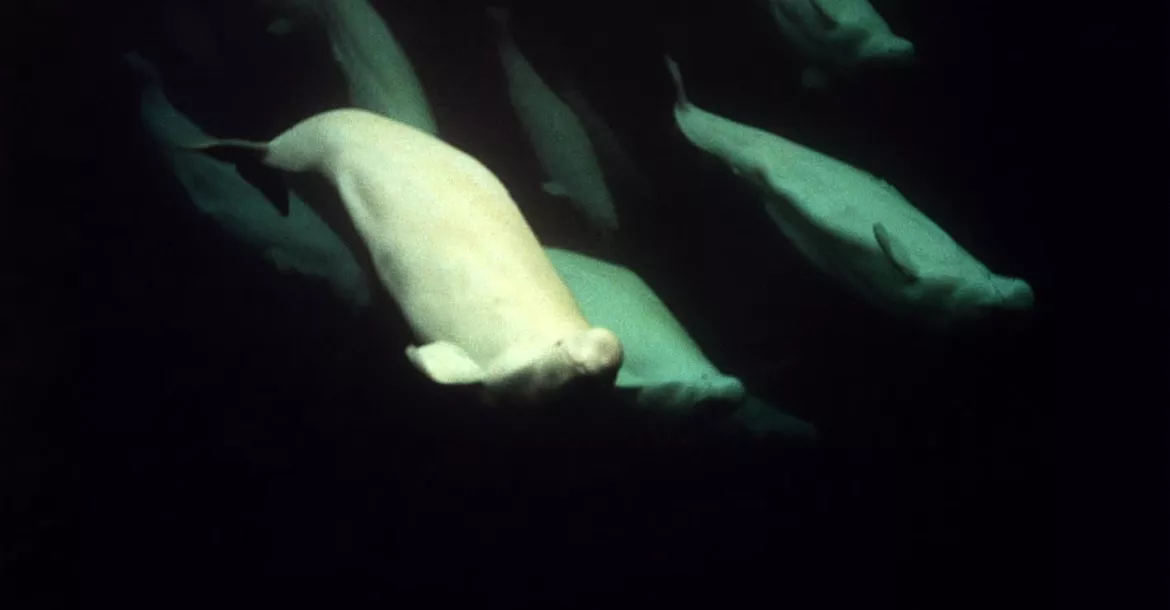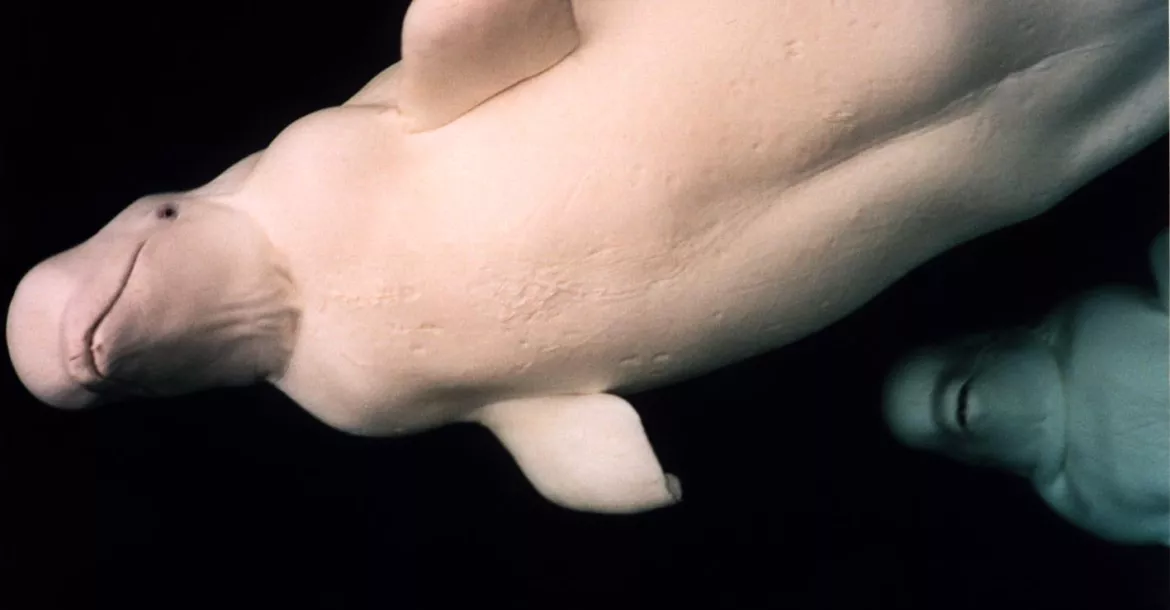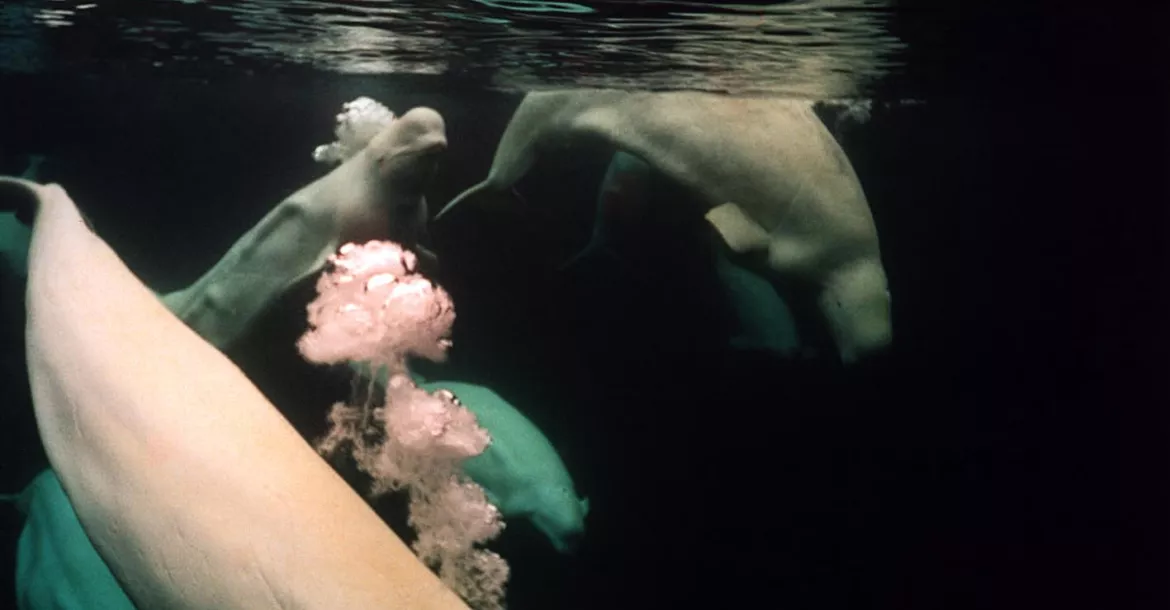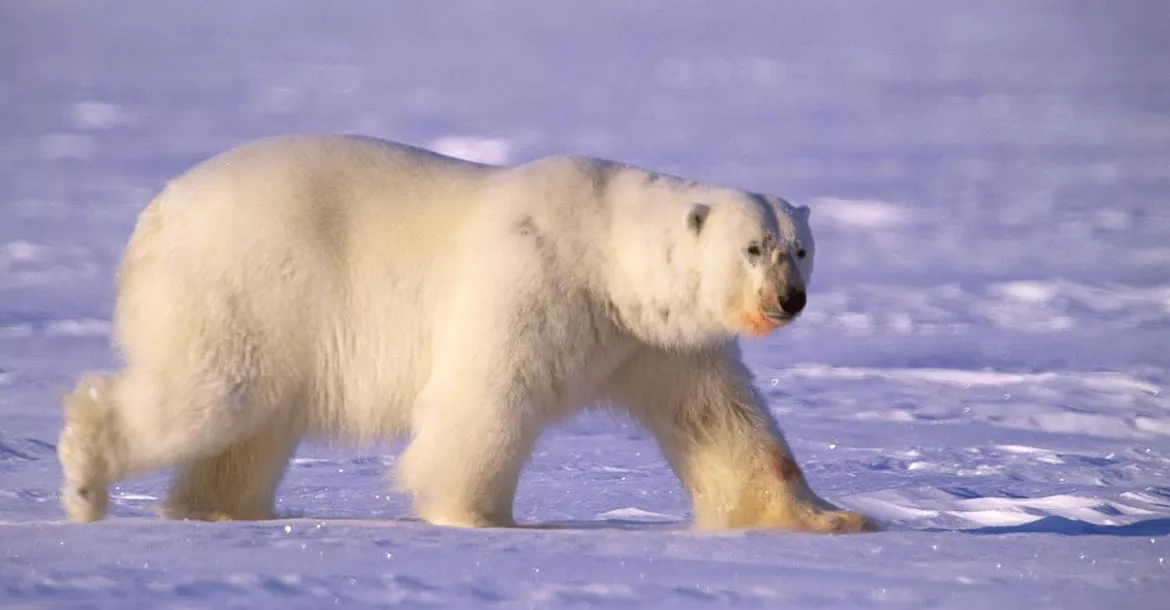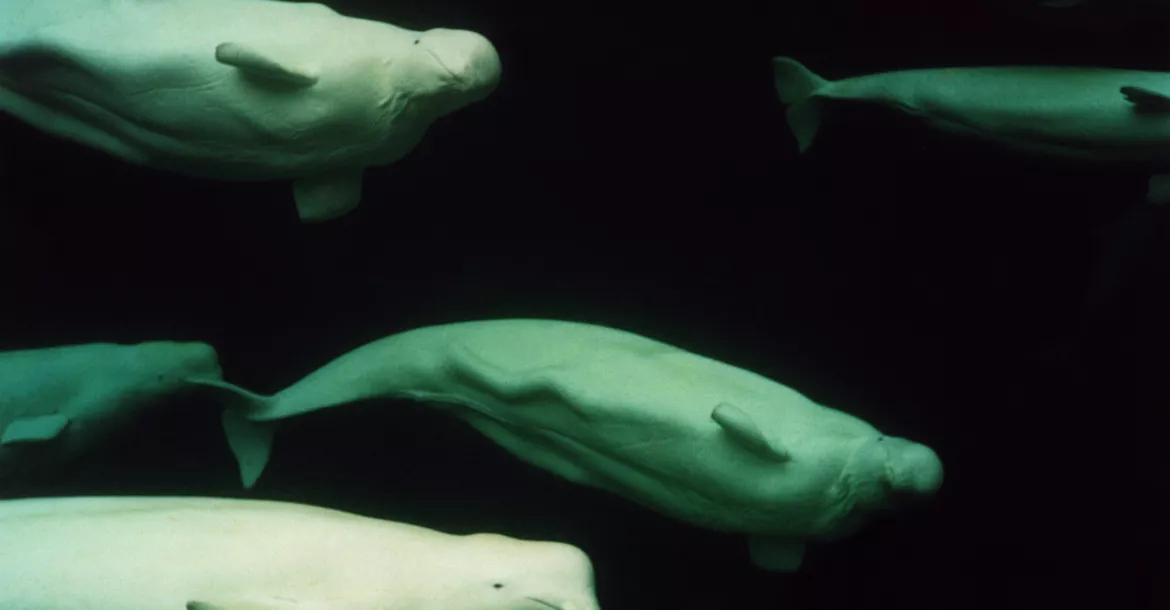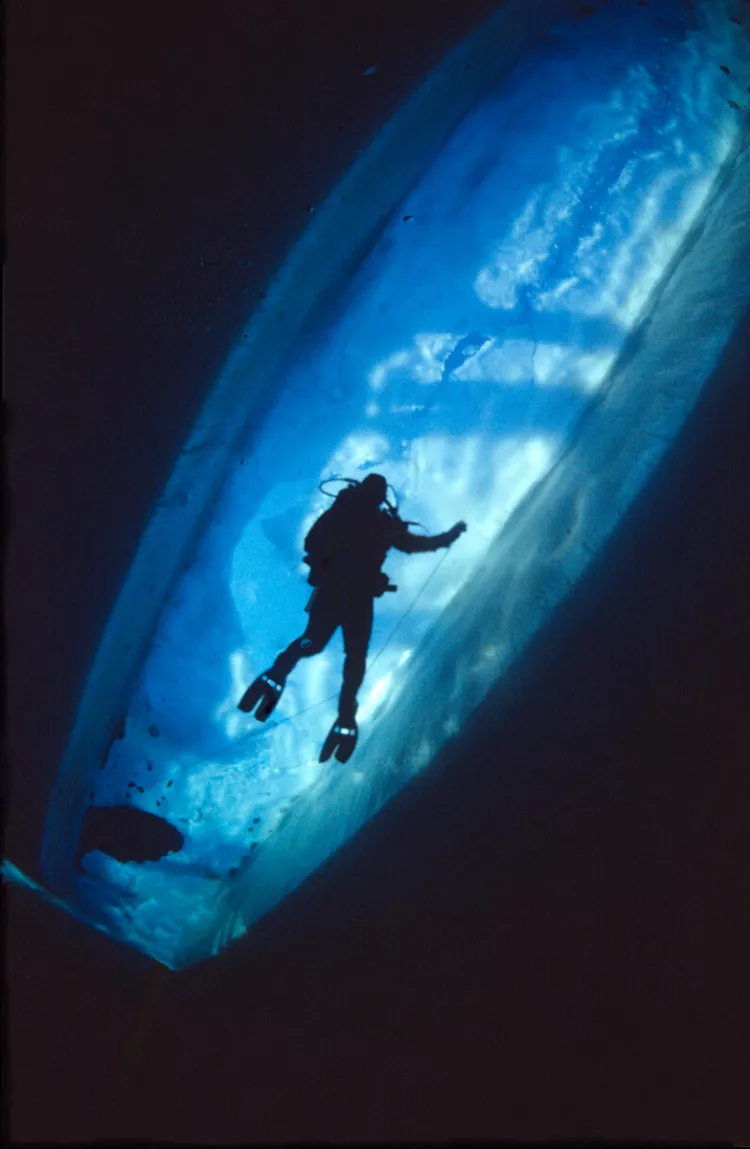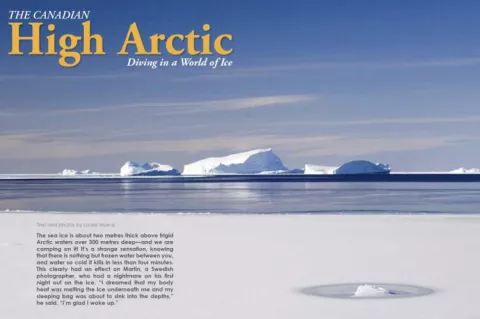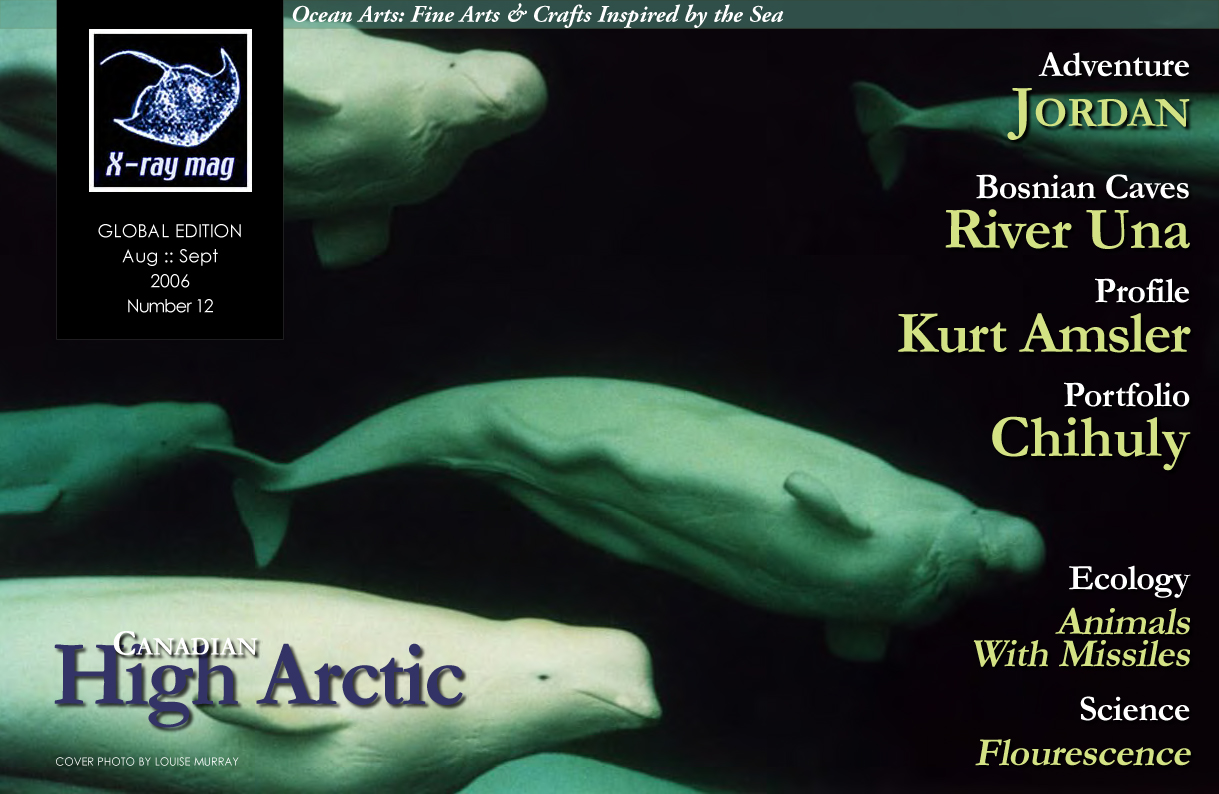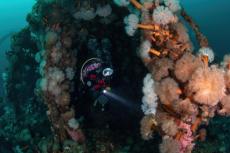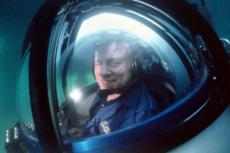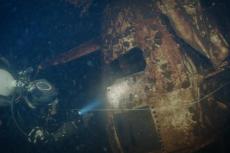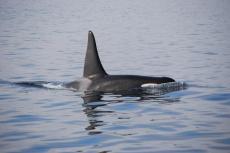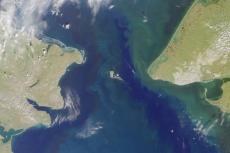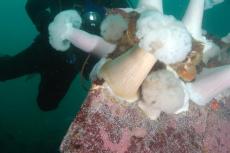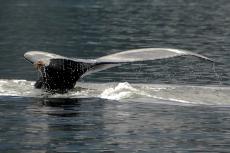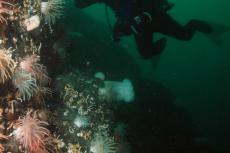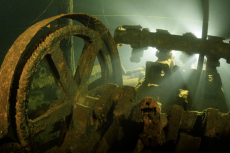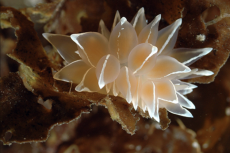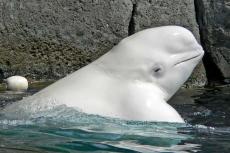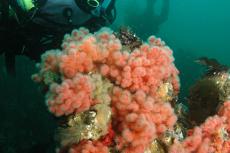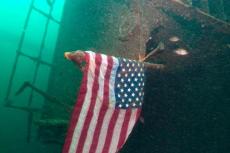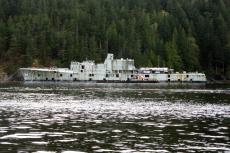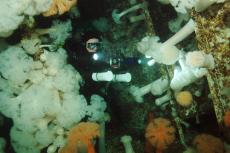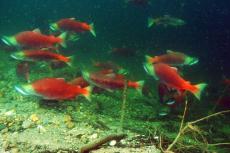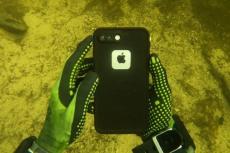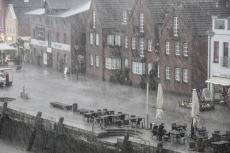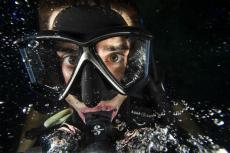The sea ice is about two metres thick above frigid Arctic waters over 300 metres deep—and we are camping on it! It’s a strange sensation, knowing that there is nothing but frozen water between you, and water so cold it kills in less than four minutes. This clearly had an effect on Martin, a Swedish photographer, who had a nightmare on his first night out on the ice. “I dreamed that my body heat was melting the ice underneath me and my sleeping bag was about to sink into the depths,” he said, “I’m glad I woke up.”
Contributed by
Factfile
Full details of Graham Dickson’s Arctic marine expeditions for walrus, bowhead whales, polar bears, beluga, narwhal and Greenland sharks can be found on his website at www.arctickingdom.com
Louise Murray leads diving and snorkelling trips to the high north for Arctic Kingdom. A self confessed polar nut, she takes every opportunity to visit and explore the Arctic regions to photograph the animals and people of the north.
A photojournalist by trade, she writes for The Times and Guardian newspapers in London and in magazines around the world.
As we publish, she will be on her third trip to the high Arctic this year, to Hudson’s Bay to photograph polar bears and beluga whales.
For more information or to order images, visit Louise Murray’s website at the link below:
www.louisemurray.com ■
Leaving Ottawa in the throes of a sultry 28 degree heat wave, our next landing is at Iqualuit, some four hours later, where a quick foray outside into freezing temperatures for a cigarette, confirms our arrival in the high arctic. A couple of other stops in Nunavut, a Canadian Territory, home to the Inuit people and six hours after leaving Ottawa, we land near the village of Arctic Bay where the temperature hovers around zero in the weak spring sunshine amid flurries of snow.
Everything that we will need for the next two weeks from shelter, food and bedding to compressors, fuel and generators has to be taken with us. The logistics are formidable, as we are venturing 100 miles out on to the sea ice. Our destination is Lancaster Sound, near the spot where Sir John Franklin perished in 1847 with all his men in the search for the North West Passage.
Ice Diving
Our first crack at a dive site starts with the largest Stihl chainsaw in the world, a 1.2 metre monster, Graham Dickson, expedition leader fires it up, a mad grin spreading across his face, as he does love his boy’s toys. Unfortunately, the easiest ice diving option was not to be, as after cutting three different holes near to an ice fracture beside camp, it is clear that the chainsaw is just not man enough to cut through the two-metre thick ice.
We load all the gear—cameras, tanks, ropes—on to the komoteks, or sleds, and head off to our next dive site option, a lead 10 km away. A lead is a crack in the sea ice that has opened and frozen shut leaving an area where the ice is much thinner, such that we can break our own entry hole to the water.
This is a serious overhead environment, and safety and redundancy in our diving is critical. “Everyone will be roped and dive in pairs initially. The second diver is responsible for signals to the rope tender on the surface,” says Graham to groans from the photographers who hate both ropes and diving with a buddy, “and if all goes well we’ll see about solo diving on the ropes. Compasses are unreliable this far north, so don’t use them.”
The water is a cool minus 1.8 degrees C, as cold as sea water can get before freezing. “I’ve never found the cold much of a problem,” says Australian Kelvin Aitken, “but then, I do have a lot of natural insulation there,” pointing to his belly and laughing, “anyway, your face goes numb as soon as you hit the water.”
All goes well on our first under ice exploration. The underside of the crack is intricately scalloped and corrugated by water and pockets are home to brown algae, sometimes dislodged in clouds by our bubbles. The lifeblood of the whole ecosystem, the pinkish krill, are easily recognizable, whizzing about like prawns on adrenaline. There are also many beautiful invertebrates, jellyfish pulsing slowly, and weird pteropods, a kind of snail, swimming by with two gracefully flapping ‘wings’.
Later, when diving the lead close to shore, we have a chance to investigate the bottom. It is teeming with life, brittle stars wave their arms at more than fifty to the square metre, and tube worms, nudibranchs and filter feeders of all sorts carry on their business next to red and green seaweeds. Far from mirroring the relative scarcity of species in the Arctic desert up top, this is an ecosystem that is exploding with life. I regret not taking a macro port for the camera. Next time perhaps.
Greenland Sharks
Each day we check the line to see if a shark has been attracted to the bait set over half a kilometer down in the icy depths. Probably less than thirty people have ever dived with these rarely seen deep water denizens, so imagine the excitement when Graham shouts, “Yes, we’ve got one, kit up fast. I want to get the animal back to the deep as quickly as possible.”
Little is known of the shark’s behaviour other than it has a reputation for being a sluggish and a non-aggressive carrion feeder, with the largest recorded clocking in at over 7 metres. Slow moving does not fit the evidence though, as scientists have been unable to explain how the sharks have been found with fast moving prey in their bellies like salmon and seals.
Slipping into the water, 30 + metre visibility reveals our shark swimming lazily, its dark mottled body stark against the blue ice, I approach the business end cautiously, keen to photograph the parasitic copepod that is found on each shark’s eye. Sure enough there it is. It is believed that the parasite actually blinds the shark over time, but the huge nostrils, largest of any shark’s, belie its main feeding sense in the dark cold water.
Kelvin is over the moon having shot his first Greenland shark, but the rest of us have really come to this remote spot for the beluga and narwhal.
Whales
Our visit in May is timed to coincide with the advent of the Arctic spring when the sea ice begins to fracture as it thins and reacts to the stress of tidal movement and warming temperatures. When large sheets of ice break off, a floe edge is created, forming the boundary between ice and sea. Suddenly light can penetrate the frigid waters triggering a plankton bloom that fuels the return of the whales feeding on fish attracted by the plankton.
We’ve waited over ten days for a floe edge to form, so when Tommy powers back into camp after a reccy on his snowmobile, we all want to know what he has to report, “It’s there. The ice has broken off,” the 66 year old Inuit wildlife officer shouts with a toothy grin. This is the moment that we have all been waiting for, to swim with Arctic whales.
First come the narwhal, mottled grey and white. I am only about 20 metres out from the ice edge, snorkelling, when a family group of six passes directly below me singing to each other as they go, the males with their distinctive tusks spiralling out in front of their heads. The sight took my breath away. The narwhal are clearly aware of the few strange neoprened objects at the surface but aren’t stopping to investigate.
At last, a group of inquisitive beluga approach, blowing bubbles at us, and following us back to the ice edge each time we leave to warm up with some hot chocolate. Beluga have unfused cervical vertebrae and so can turn their heads to follow our every move, as they swim along on their backs below, shadowing our every twist and turn.
Paul Jackson has brought along his hydrophones to capture their sounds and sits on the floe edge in a folding chair smiling to himself as he makes his recording. Most of the rest of us are floating, snorkelling on the surface, or free diving down, cameras in hand. Known as sea canaries to early sailors, the whale song reverberates through your body, you can both hear and feel the song.
The floe edge works as a whale highway as the animals use them on their northward spring migration, sending out regular patrols to search out safe new leads for the pod to follow. On a good day, hundreds of whales cruise by, groups of up to twenty tusked narwhals and pods of curious white beluga.
Arctic armor
After many Arctic diving trips, I have two secret weapons under my SEAC drysuit. A Fourth Element Arctic two piece undersuit keeps me pretty toasty, and I have to confess that I rarely took it off for two weeks, but what the hell, no one else could wash either, so there were no complaints. Between that and my drysuit, I use a Typhoon Icebreaker—a battery operated neoprene hot vest developed for the military to extend my dive times as much as possible. Keeping your body core at 42 degrees, it stops the body withdrawing blood from the extremities and means that you can stay in the water at least 50% longer than without it.
The Arctic is not the most obvious of dive destinations. Simply being there offers an incredible experience. Having a chance to meet experienced Inuit guides and benefit from their knowledge is a real plus, but being able to venture below the ice is the ultimate adventure, to feel and be part of an ocean teeming with life. But to see Arctic whales, hear their sounds in the water, through the ice and through your body, and to connect in a way impossible to describe is a real privilege. I’ll be back as soon as I can. ■
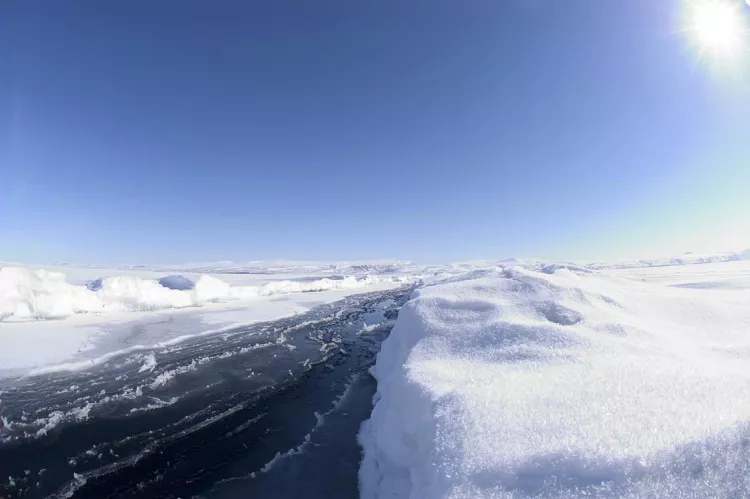
Climate change and the Arctic
In as little as fifteen years much of the Arctic Ocean could be ice free in summer. The last time that happened was a million years ago. For the Arctic peoples and the animals who share their home, the prognosis is not good. Dr Terry Prowse, Canadian geographer and member of the international Arctic Climate Impact Assessments group says, “The Arctic is the canary in the global coal mine, and its already sick.”
Sea ice cover in the Arctic summer reached a record low last year due to warmer summer temperatures, and ice thickness has decreased by 40% over the last 30 years. Scientists have been monitoring the thickness and extent of the Arctic ice via NASA satellites from space. The results are alarming. In a vicious circle more white, heat-reflecting ice is melting and being replaced by darker, open ocean, which absorbs more heat from the sun, accelerating the warming. The Kyoto protocol on greenhouse gas emissions came into effect in February 2005 and is projected 2012 to reduce greenhouse gases by about 5% from 1990 levels. Even if all governments are successful in meeting the targets set in the protocol, which looks increasingly unlikely, the planet is expected to warm by 3 degrees by the end of the century. In the polar regions, the warming will be twice that.
Ruth Curry at the US Woods Hole Oceanographic Institute came up with an apocalyptic vision of the future based on events already in progress. She found that between 1965 and 1995, 20 billion tonnes of freshwater melted from the Arctic into the north Atlantic, more freshwater than in the all of the Great Lakes combined. If this continues, “The great ocean conveyor belt that drives the planetary water cycle and causes the Gulf stream to modify our north west European climate could shut down altogether, triggering an abrupt change in climate only decades from now.” This ‘Day after Tomorrow’ scenario could see much of the northern hemisphere plunged into a mini ice age.
Greenland’s ice cap, which contains enough ice to raise sea levels globally by 7 metres, is starting to melt and could collapse suddenly, Curry said. Most scientists believe that it would take hundreds of years of warm weather to melt it all, but already freshwater is percolating down, lubricating the base and making it more unstable. Eric Rignot of NASA’s jet propulsion lab has been measuring the rate of loss of ice from the ice cap via satellites. Over nearly a decade the rate of annual loss has almost doubled from 90 cubic kilometers in 1996 to 150 cubic kilometers in 2005. ■
Published in
-
X-Ray Mag #12
- Läs mer om X-Ray Mag #12
- Log in to post comments

